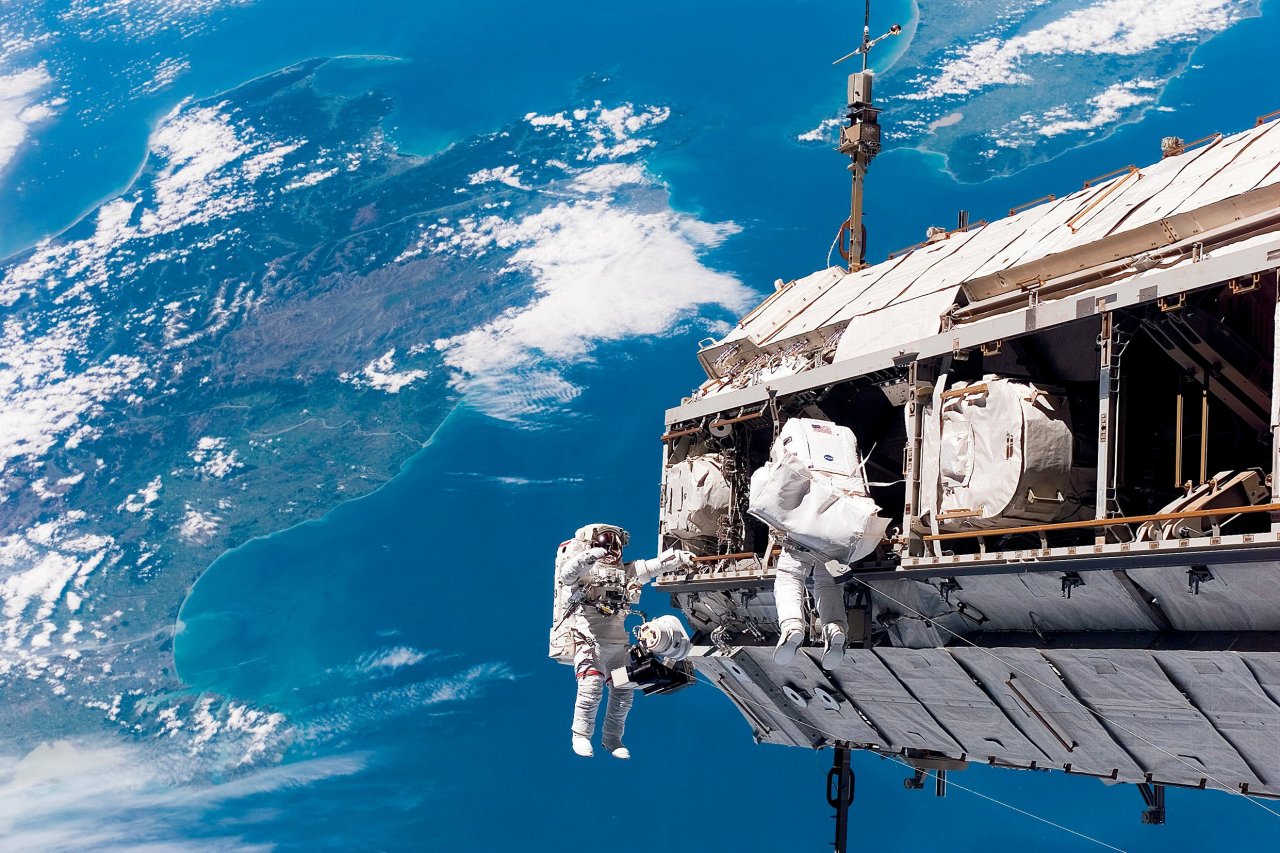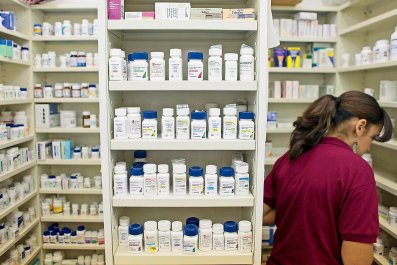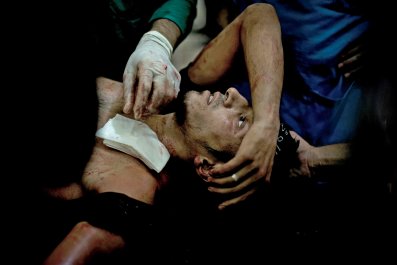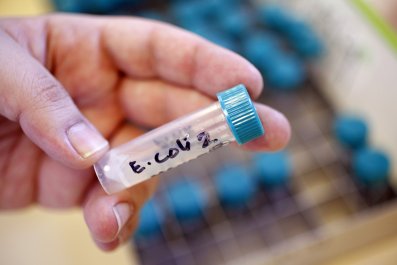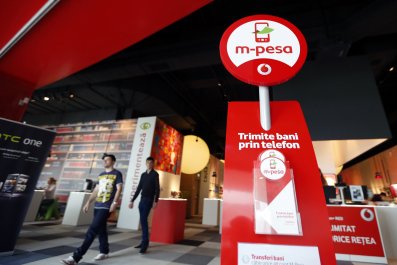Any interest in a free Ferrari? Michael Flynn, an engineer at NASA's Ames Research Center, wants to give you one. But there's a catch: You need to drive it for two to three years straight, with no maintenance stops, and if it breaks down—well, he'll kill you.
Flynn is not really homicidal; in fact, as a life-support engineer, his job is to keep people alive. The Ferrari scenario is a thought experiment, a metaphor Flynn uses to explain the challenges of a real Mars mission. His point is that, without regular maintenance, mechanical systems inevitably fail, and on a multi-year mission to Mars, if the spaceship fails, the crew dies. Based on NASA's experience with the International Space Station (ISS), Flynn says, "what we've learned is that using this traditional machine approach is unlikely to be very successful." With the ISS, if something breaks or they need more water, it can be flown up. The station can even be evacuated. That's not the case with a Mars mission, where any ship will be millions of miles away, and out of reach.
On the other hand, the human body is a beacon of reliability compared with a machine—even one as finely tuned as a Ferrari. Millions of years of evolution have created a human organism with built-in redundancies and the ability to repair itself—key skills a traditional machine doesn't have. That's why, Flynn says, the question they're working on solving at the Ames center is, "Can we integrate these lessons learned from biological systems into mechanical systems?"
NASA scientists have been conducting research focused on harnessing the power of biology to create useful things out of what seems to be nothing. For example: On Earth, 3-D printers are proliferating, enabling people to produce, on demand, the products they need. And in fact, one is being sent to the ISS on the SpaceX 4 mission scheduled for August; it will be the first 3-D printer in space. But scientists at Ames are taking the idea one step further. A bioprinter they're working on doesn't just spit out plastic; it prints out yeast cells, a single cell at a time, explains Lynn Rothschild, a scientist at Ames specializing in what's known as synthetic biology. The yeast cells, in turn, excrete red or blue pigments.
The pigments are just a test product. "The next step is to actually make something," Rothschild says. That something could be a material that's plentiful on Earth but could be scarce and useful far away—like rubber, cotton or wool, which could be excreted by the yeast or something like it. As Rothschild points out, "You're not going to bring a sheep to Mars." But if you could grow your own wool sweaters from a machine, maybe you wouldn't have to.
Other potential uses are even more novel. For example, Rothschild suggests that synthetic bone could come in handy, perhaps for structures. There's "a huge yuck factor if we suggested you're going to start building houses out of bone or teeth on Mars," she says, "but there could be really great properties of bone or teeth, and so if you could just print those properties with an engineered yeast…you could take advantage of these biological materials."
NASA has also explored ways to build bricks out of Martian surface material. It's expensive to shoot heavy stuff, like water or building materials, into space, so scientists like Rothschild like the idea of creating many materials once the astronauts are on the surface. One line of research explored using urine: Astronauts could hypothetically build bricks by mixing genetically modified bacterium (which the voyagers would bring with them—bacteria is lighter than a brick, after all) with pee and the soil on Mars, which the scientists refer to as "regolith." That process, if done the right way, could solidify the regolith into building material. Another idea focused on what Rothschild calls bioglues: Consider barnacles, which cling so tightly to a ship's hull that no sea swell can knock them off. If astronauts could synthetically produce a barnacle-like adhesive, that could be mixed with regolith to form bricks.
Speaking of urine, NASA has developed a small bioreactor that runs off pee. The bioreactor is roughly the size of a shoebox and has two sections, explains John Hogan, an environmental scientist at Ames. On one side, there's pure urine being treated with microbes, which produce a little bit of electricity and carbon dioxide, and consume the organic waste material in the urine—a step toward turning it into drinking water. (It would take additional processing before you could drink it, but this is a useful first step that could complement the type of system currently in use aboard the ISS to convert urine and other wastewater into potable aqua.) The other side of the bioreactor takes the carbon dioxide and electricity produced on the first side and, along with other microbes and some additional electricity, produces methane.
The reactor is small, and doesn't produce a lot of methane, but enough of that gas could be used in a fuel cell to provide power to machines on the surface of Mars. And by both producing and consuming electricity, the reactor helps power itself. "It's nothing glamorous," Hogan says. "You can look into it and see the slimy biolayer. It's not going to be on the cover of GQ."
It's also just an initial experiment—the goal, Hogan says, is that the process could be tweaked so that the astronauts can build larger bioreactors that turn a common substance that future visitors to Mars don't need—like urine—into something more useful—like bioplastics to use in a variety of ways.
First, though, those pioneers will have to survive the trip to Mars. To help make that likely, NASA has imagined a prototype for another synthetic biology innovation: the Synthetic Drug Synthesis System. Astronauts couldn't bring every single conceivable drug with them on a Mars mission, so NASA is dreaming up a way to teleport medicine production into space. Flynn explains that if an astronaut became ill and needed a drug not in stock on the ship, NASA could transmit the genetic information for it to the spacecraft. The astronauts on board would grow some sort of starter material, like a bacterium or a fungus, and with a "genetic printer" they'd print out the right genes, then inject it into the host material. That would "cause the cell to turn into our own little customized manufacturing facility," Flynn says, to spit out the needed drug.
While the system Flynn describes doesn't currently exist, researchers have begun to test this type of biotechnology: They engineered the bacteria E. coli to produce melanin, the pigment that gives skin its color. The idea is that someday a machine on a spaceship could produce drugs on demand in a similar way.
Not all of NASA's approaches to boosting sustainability involve fancy biology. Trash can always just be squashed. A second-generation heat compactor unit is being built at Ames, says Michael Ewert, an engineer at the Johnson Space Center in Houston who is the systems analysis lead on NASA's multicenter "logistics reduction and repurposing" program. Remember that big trash compactor in Star Wars that Luke, Han, Leia and Chewbacca got stuck in on the Death Star? This is like that, but much, much smaller—the space for the trash is smaller than a square foot. Trash—food wrappers, wet wipes and even old clothing—goes in the unit, Ewert says, which squishes it down into a flat square and heats it up to about 150 degrees. The result is like a "hockey puck tile" that could be used for radiation shielding. And there's a valuable byproduct. "Any water that's left in it will boil out, and then we can recondense that water for reuse," he says. "Water is precious in space, so we want to recover as much water as we can from the trash."
On a Mars mission, "sustainability is not an option," Flynn says. It's a requirement. Squeeze every last bit of utility out of what resources you have. NASA is making sure that not even human waste goes to waste.



